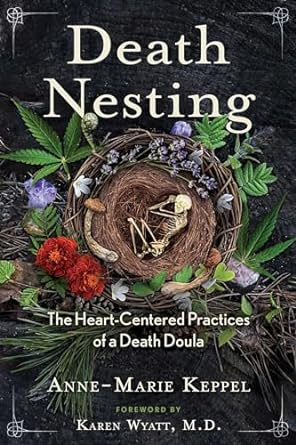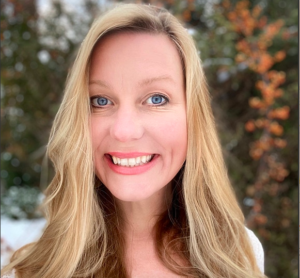
In her thoughtful guide on approaching death, author Anne-Marie Keppel introduces us to the concept of “death nesting.” In her words, this means “preparing the nest for one who is dying, just as we might prepare a nest for one who is about to give birth.”
Keppel identifies herself as an “ancient and modern death doula” based on both her life experience and certificate training. She covers the usual preparatory basics, such as advance directives, how the physical body moves through the dying process, and funeral planning. Yet Keppel also reaches beyond to the ineffable – the spiritual, sensory, and earth-based medicines that can serve as support and guides on this death-nesting journey.
Family caregivers for those at end of life will find this book particularly helpful. Keppel’s numerous lists offer plenty of assistance in a pinch, like what to pack in a hospital bag. And she offers creative ideas for care when there may be little energy reserves to draw upon; suggestions for mental soothing. Throughout the book, Keppel outlines mindfulness practices and herbal recipes for both caregivers and their ailing loved ones. While healthcare staff may not always have the ability to incorporate everything Keppel offers into their work, they may find some helpful tips and tricks for use.
How Death Nesting is Done

Author Anne Marie Keppel
Credit: www.annemariekeppel.com
Keppel walks the reader through each step of death nesting, including constructing what she calls the “outer nest” and the “inner nest.” She lists practical suggestions for creating a protective barrier from the outside world — such as setting up an email auto-response. She also suggests various ways to make protective sprays and herb bundles. One special tip is to collect water or earth from meaningful places when traveling that can later be placed in spray bottles and misted around a room. She notes, “love, clarity and intention are everything in this activity.”
Keppel then moves inward to discuss the room’s ambiance. She suggests including live plants and flowers, but emphasizes that each individual will have their own specific desires and needs. Some people may prefer to die with the windows open, or even outdoors while others may be soothed by nature sounds played through a speaker. In a chapter titled “Dying is a Sensory Experience,” Keppel explains how to bring soothing scents and sounds into the room (while cautioning that some individuals are highly sensitive to smells of any kind). She also offers helpful tips for mouth care and ways to support taste, sight and touch.
Despite the focus on preparation, Keppel also emphasizes the importance of embracing the unexpected; of letting go. The nest need not always be a physical space, after all. One of her patients in the ICU, who had hoped to go home to his carefully prepared nest to die, had to make peace with the idea that the most important nest was inside of him – what Keppel terms a “secret nest.”
After all, as Keppel writes, “We cannot assist another on this journey inward before the great release, but we can remind the one who is dying that the journey is safe, that they are loved and that they will soon merge with love itself.”

 “Death Nesting: The Heart-Centered Practices of a Death Doula” by Anne Marie-Keppel
“Death Nesting: The Heart-Centered Practices of a Death Doula” by Anne Marie-Keppel


 “Songbird” by Fleetwood Mac
“Songbird” by Fleetwood Mac
 First the Wealth Gap, Now the U.S. Has a Growing Health Gap
First the Wealth Gap, Now the U.S. Has a Growing Health Gap
 How to Comfort A Dying Loved One
How to Comfort A Dying Loved One














